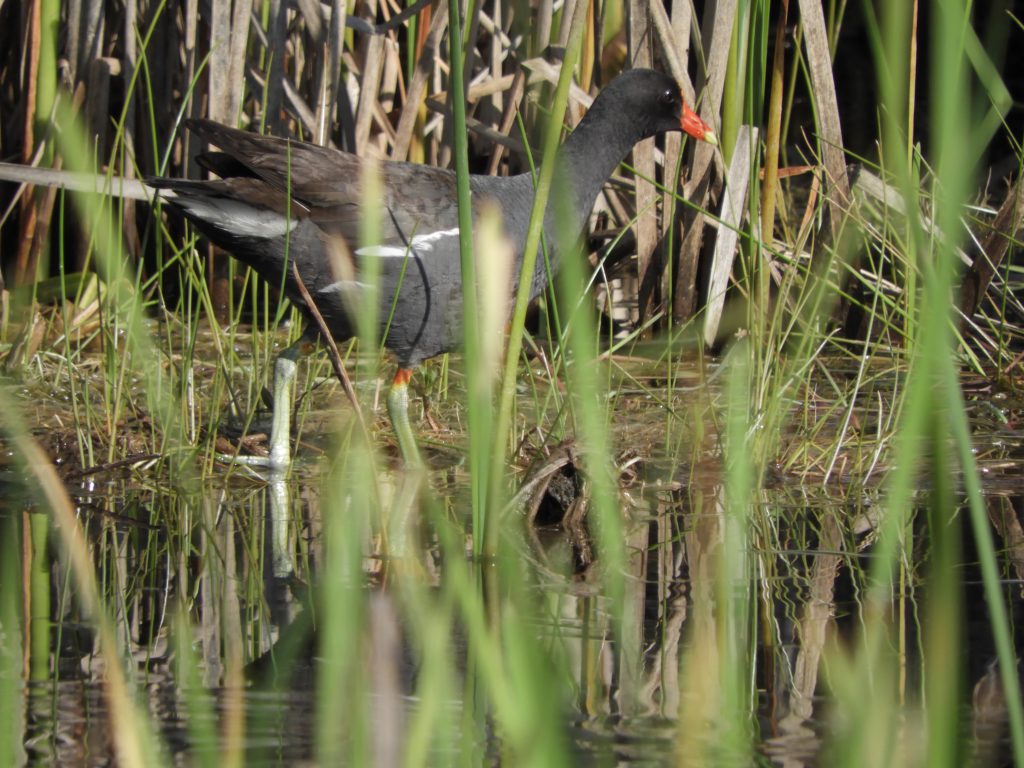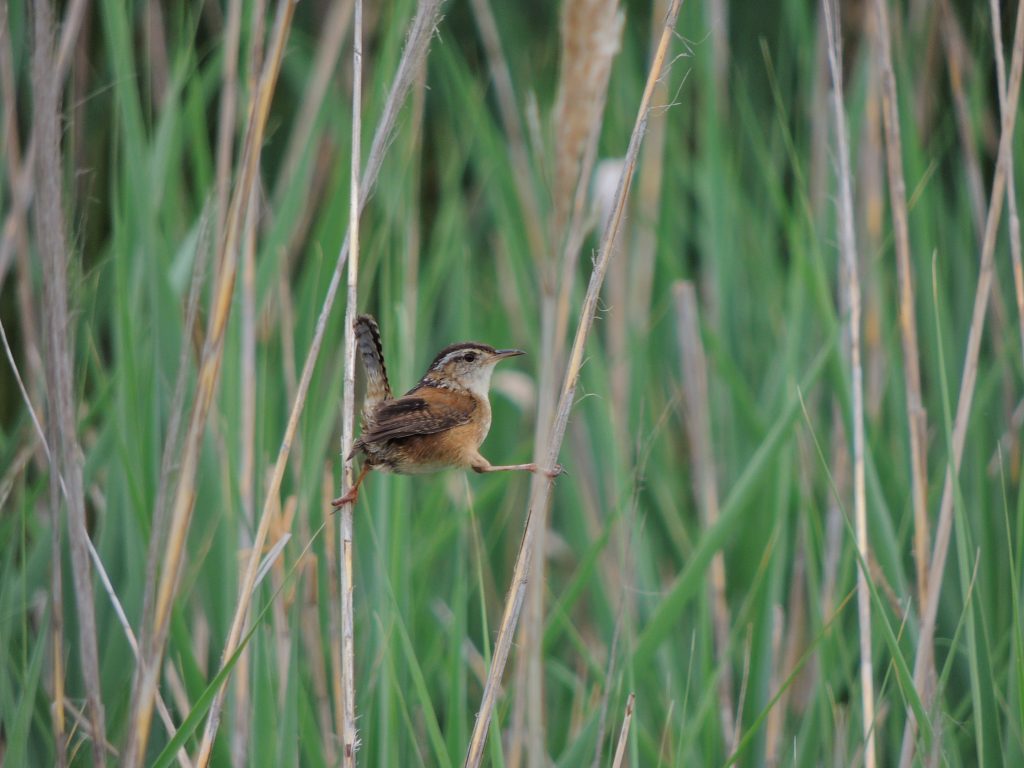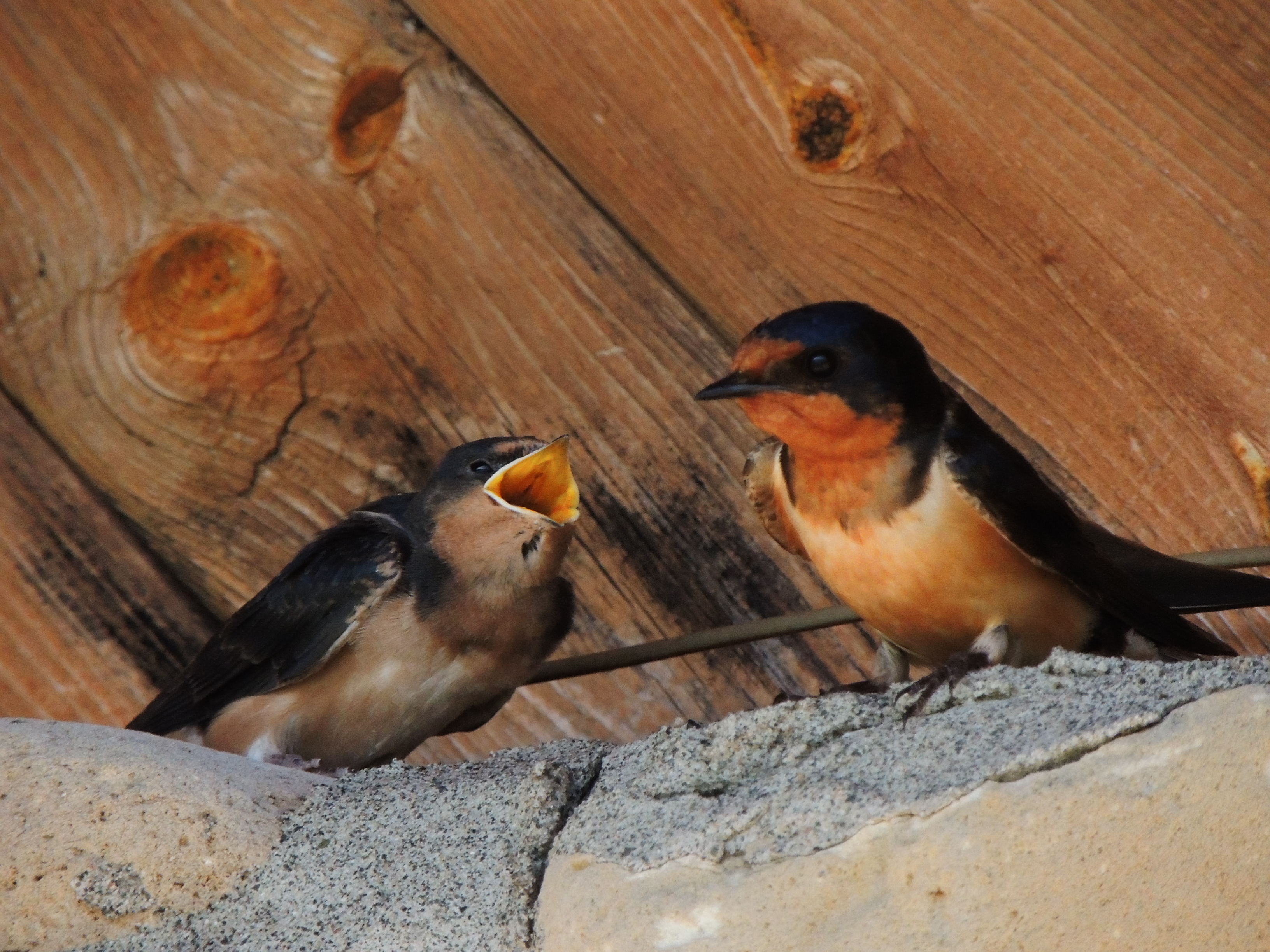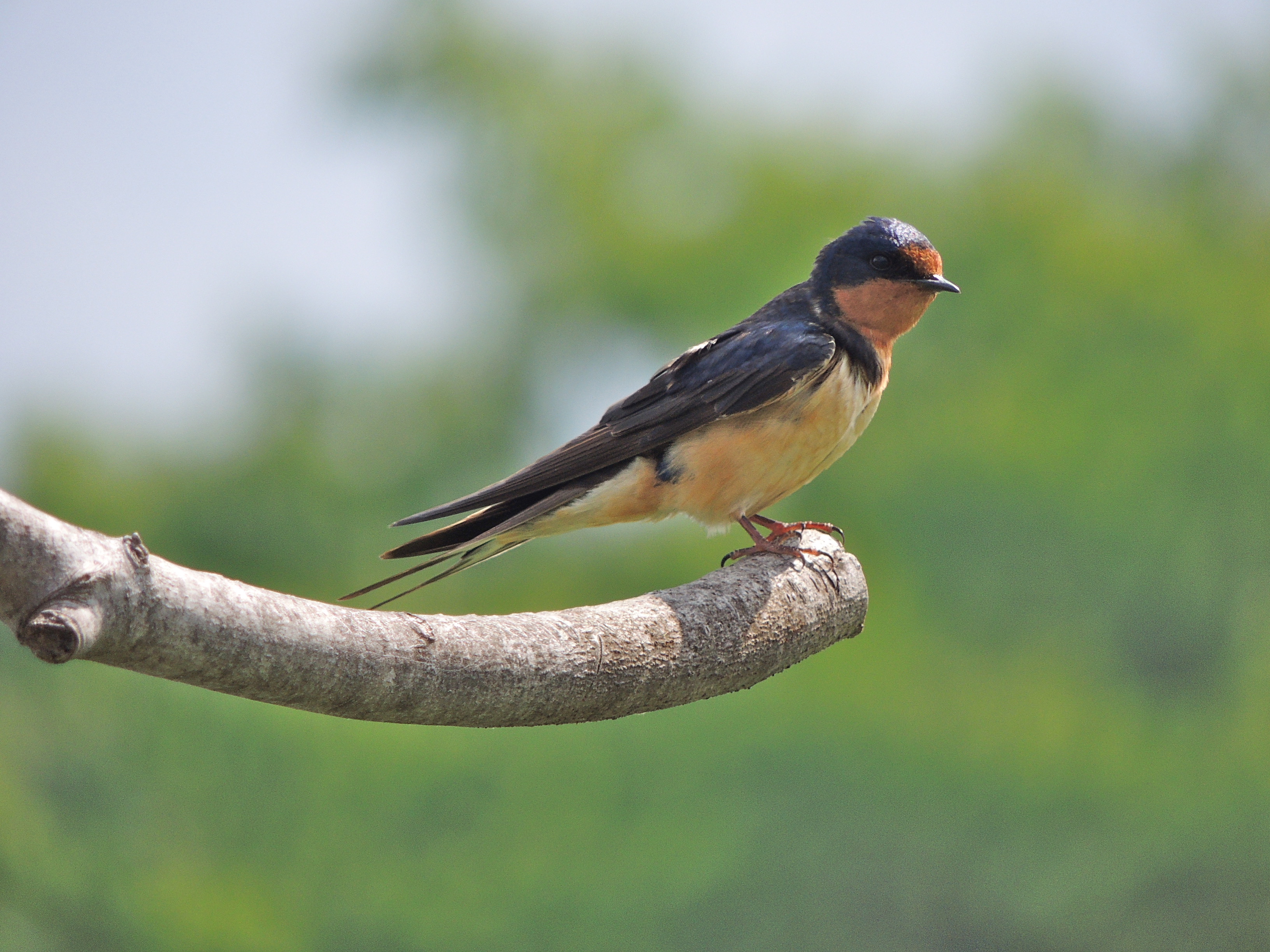June 23 2019 Valens, ON. My suggestion to go birding early this morning was met with mild groans of resistance and disbelief, it’s a Sunday you see. But I knew my companions’ appetite for good birding. I had in mind to re-visit the same bird-rich marsh of a week ago and to get some quiet birding in before road traffic made things difficult; and besides, the early hours of the quietest day in arguably the finest month can be some of the best. We agreed upon a seven-a.m. meet up, not everyone’s best hour, but a good start.
The marsh was mellow and productive, it was full of crawling, wriggling and swimming invertebrates popping to the water’s surface and the overhead was laced with swooping Tree Swallows and Eastern Kingbirds. We watched a Common Gallinule at close quarters and saw a very secretive Pied-billed Grebe successfully melt into the reedy background. Our list of 30 species included a couple of Marsh Wrens, a barely glimpsed Virginia Rail and a Pine Warbler, and we left scratching a few mosquito bites but happy with our results.


Despite being a bit short of time we decided to make a roadside stop at some open fields, deep in waving grasses, hoping to see Grasshopper Sparrows, Eastern Meadowlarks, Eastern Bluebirds and Bobolinks; it was not difficult, they were all there.
The fields are maintained as permanent grassland and are cut for hay much later than conventional wisdom would suggest. The farmer stopped to chat and told us she deliberately delays cutting until well after all ground-nesting birds’ young have flown. It’s a management approach that puts wildlife, particularly threatened or endangered bird species, above current best practices of haymaking.
We were invited to enter the property and enjoy the birds and it was like turning the clock back to days when farms and nature were more at ease with each other. There would have been a time in rural history when such a farm landscape easily attracted and supported the life-cycle of grassland birds: bobolinks, sparrows, meadowlarks, kingbirds and swallows. Today those species are threatened from all sides and sources and their populations are dropping precipitously. At least on this farm they are secure for a summer.
I paused to peer through an open doorway into an old barn with twittering Barn Swallows zipping and racing past me, all busy with their mud-cup nests fastened to old hand-hewn beams. Their endless comings and goings made it impossible to know how many nests there were, but in a glance to the skies outside, I reckoned on at least 40 swallows cruising around in woven tangles. This is the picture of summer that must go back hundreds of years, even if not necessarily in young Ontario then in many other parts of the northern hemisphere. And as a metaphor for a dreamy, bird-rich, summer morning off the beaten track, the Barn Swallows were my Birds of the Day.


Thanks for sharing, Peter. Birding is excellent here in Nova Scotia, and already have many new species.
-Liam